
The term vision impairment is used to cover a range of vision levels and conditions that includes all blind and partially sighted people. A child or young person is thought to have a vision impairment if they have an eye condition that cannot be fully corrected using glasses. In many classrooms there are learners who may have visual acuity worse than 20/40 or 20/60. There is often a wide variation in the degree of disability experienced by learners with vision impairment and, therefore, the amount of support they require. Where a learner does not have access to the same visual experiences and cues as their peers, their learning opportunities can be reduced.
This course looks at the impact that vision loss can have on a learner’s life and shows how you can make your practice more inclusive for these learners, offering practical assessment ideas and intervention strategies.
This course responds to the information needs of the whole community centred around supporting the child/young person with a vision impairment. You will learn how to assess the needs of a learner and go on to develop a support plan consisting of SMART goals and interventions, which you will implement and later review to determine how well it has met the learner’s developmental needs.
The target age range is compulsory education (4-18 years), but the course may benefit those in early years settings too. Parents and carers benefit from raised awareness of their child’s needs. Advisory teachers, therapists and educational psychologists gain access to evidence-based CPD resources that can be used to strengthen capacity in their local authority and schools. Schools can use this course to train individuals or groups of teachers and teaching support staff as part of a school’s improvement plan or a whole-school initiative. NQTs/RQTs also build a secure knowledge of the graduated approach at the start of their career.
Our courses are structured into four sections. Click on the section headings to reveal page titles and some example content.
Learn how to identify the different types of vision loss and identify the impact on development and confidence.
- Section objectives
- What is vision impairment?
- The eyes and vision
- Myopia (short sighted)
- Hypermetropia
-
Astigmatism
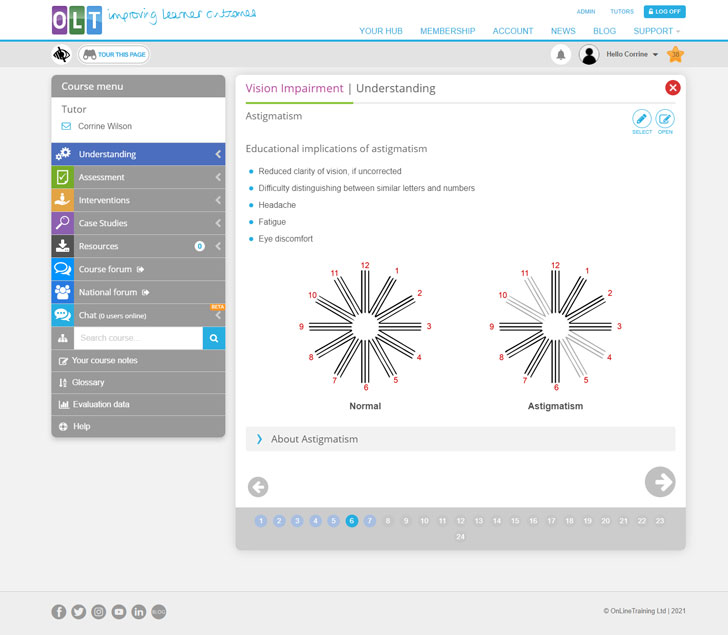
Screenshot from Understanding page 6 - Strabismus
- Nystagmus
- Albinism
- Cataracts
- Glaucoma
- Aniridia
- Maculopathy
- Optic atrophy
- Cerebral and cortical vision impairment (CVI)
- Retinopathy of Prematurity
- Retinitis pigmentosa
- Vision loss: facts and figures
- Quick quiz: Fact or fiction – common eye myths
- A history of the education of those with vision impairment
-
How does vision impairment affect a child’s development?
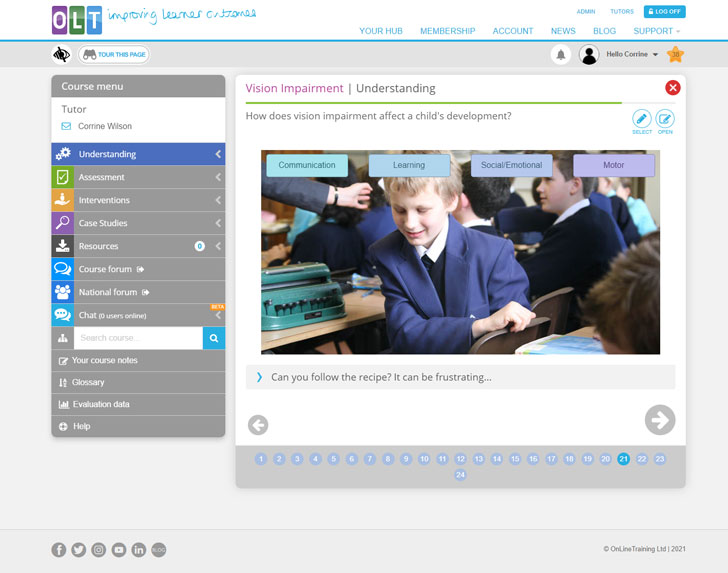
Screenshot from Understanding page 21 - Additional needs: multiple disabilities and vision impairment
- End of section quiz
- Section summary
Explore some of the assessment tools used to monitor the progress of visually impaired children and inform support programmes.
- Section objectives and your learner profile
- Why assess?
- Visual assessment
- What does visual acuity mean?
- Functional vision and its effects on learning
- Assessing individual needs
-
Social interaction and communication
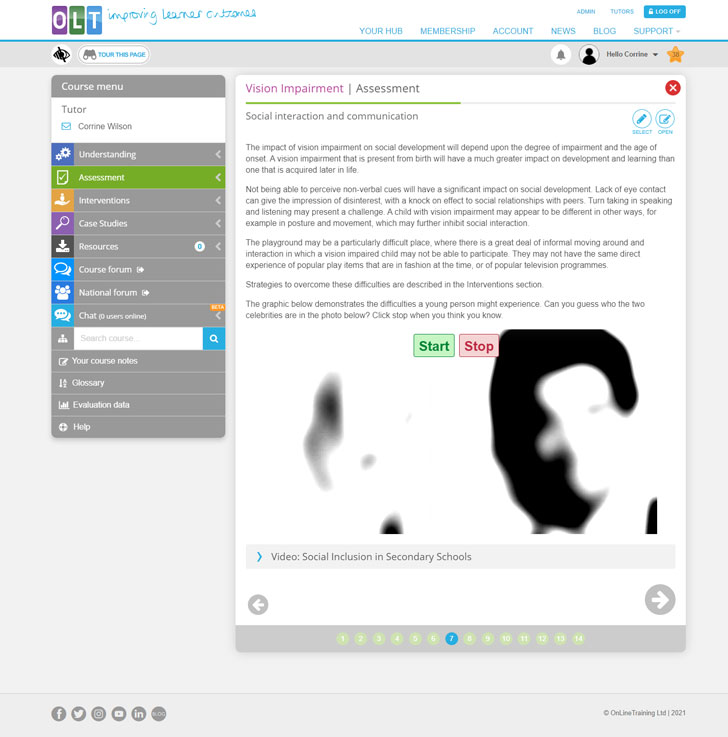
Screenshot from Assessment page 7 -
Learning needs
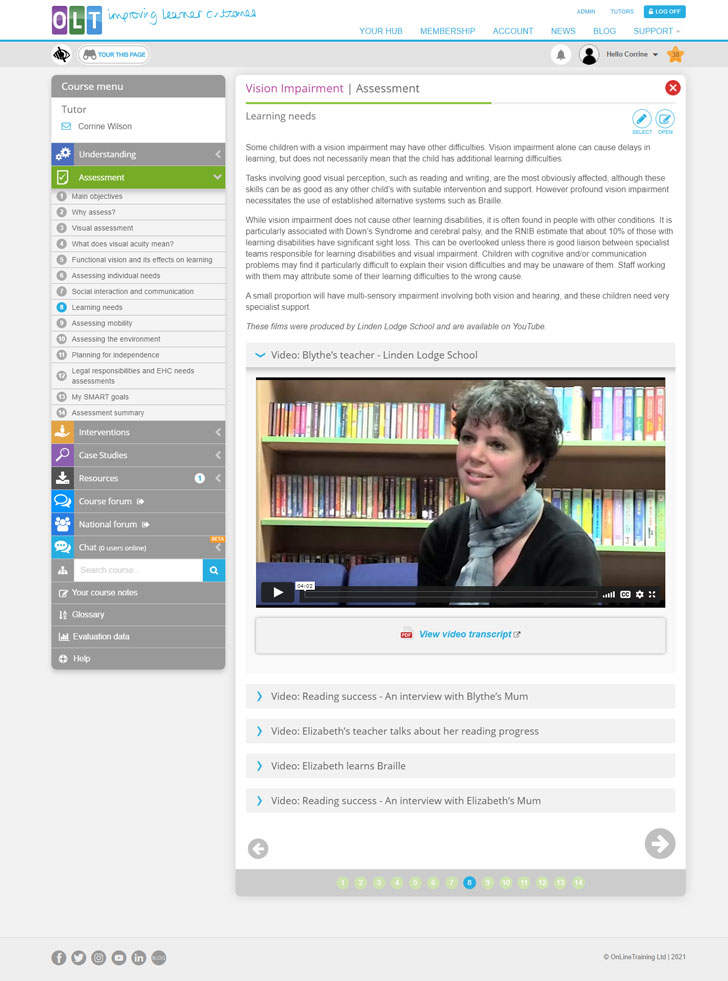
Screenshot from Assessment page 8 - Assessing mobility
- Assessing the environment
- Planning for independence
- Legal responsibilities and EHC needs assessments
- Course assignment: Your learner’s three SMART goals
- Section summary
Choose from a range of strategies to create personalised programmes of learning to support your learners.
- Section objectives
- General principles of good practice
-
Modification of materials and provision of additional resources
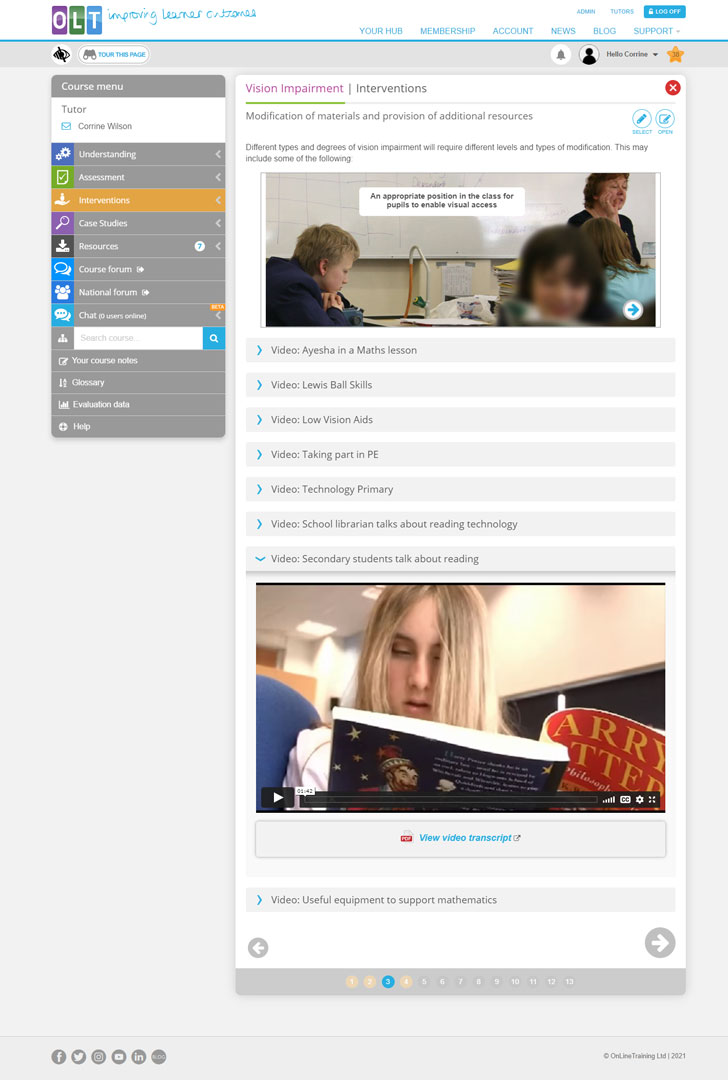
Screenshot from Interventions page 3 - Adapting the classroom environment
- Use of technology and other resources: low technology
- Use of technology and other resources: high technology
- Self-help and independence skills
-
Social skills
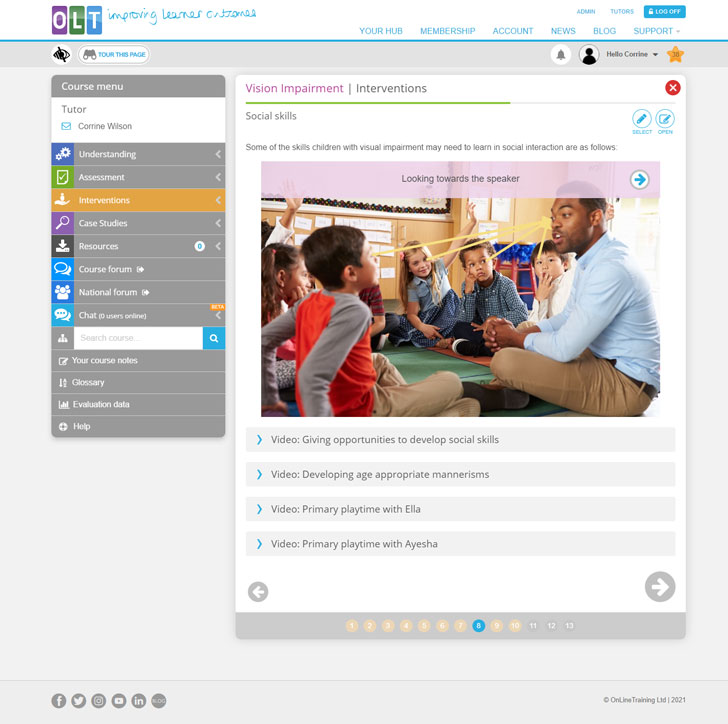
Screenshot from Interventions page 8 - Specific interventions
- Educational provision
- Course assignment: Your learner’s interventions
- End of section quiz
- Section summary
View real life examples that illustrate the needs and the interventions implemented to maximise progress.
- Case study: Pre-school Jodee
- Case study: Pre-school Grace
- Case study: Key stage 1
- Case study: Key stage 1 – Oscar
- Case study: Key stage 2
- Case study: Key stage 3
- Case study: Special school
- Case study: Key stage 4
Senior Leader
Teaching Assistant
Qualified Teacher
Teaching Assistant
Senior Leader
Teaching Assistant
Teaching Assistant
Qualified Teacher
Teaching Assistant
Course learning outcomes
On successful completion of the course, you will be able to:
- locate and label parts of the eye, and identify common eye conditions
- describe the impact that vision loss has on child development, learning and social inclusion
- explain the additional learning needs associated with vision loss
- use checklists to carry out observations of a learner’s functional vision
- describe your role in implementing an Education Health and Care Plan
- modify materials to enable pupils to access print and other media
- utilise low vision aids and high-tech aids to improve access to learning
- make appropriate adjustments to support communication, access to the curriculum, social inclusion and wellbeing, and to increase independent learning skills
- create a support plan for a pupil/group of pupils in your school

